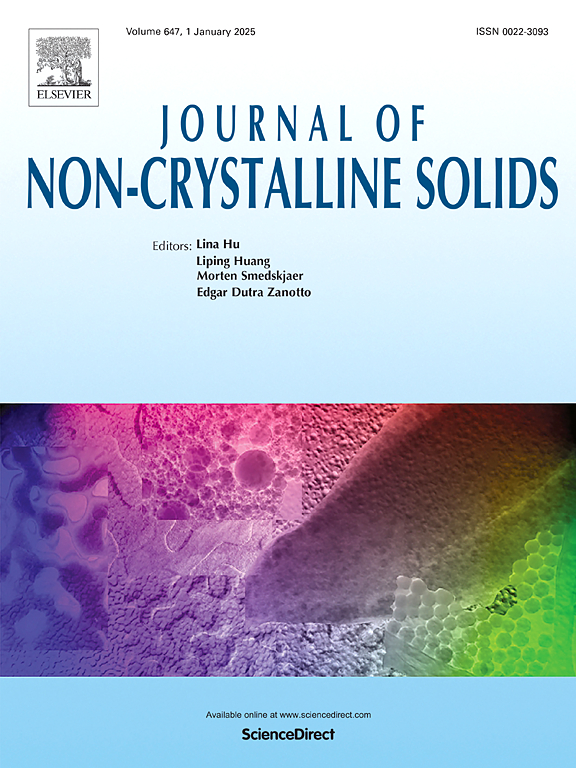平衡单组分原子键熔化。砷,锑和铋的箱子
IF 3.5
3区 材料科学
Q1 MATERIALS SCIENCE, CERAMICS
引用次数: 0
摘要
在液态致烟剂中,在接近熔化温度时可以形成准稳定结构。对其稳定性的性质没有统一的看法。在本工作中,使用晶体轨道汉密尔顿居群(COHP)方法解决了确定这些结构中原子成键程度的任务。本文采用了砷、锑和铋熔体在其熔点附近的初始模拟结果。结果表明,p轨道上电子相互作用的特征决定了原子间键长和键角的特征。已经确定,结构的稳定性随着化学元素的原子质量和结构中原子数量的增加而按幂律降低。所得结果阐明了从第一性原理出发对烟原熔体中准稳定结构形成机理的认识。本文章由计算机程序翻译,如有差异,请以英文原文为准。
Atomic bonding in equilibrium single-component melts. The cases of arsenic, antimony and bismuth
In liquid pnictogens, quasi-stable structures can be formed near melting temperature. The nature of their stability does not have the unified point of view. In the present work, the task of determining the degree of atomic bonding in these structures is solved using the Crystal Orbital Hamilton Population (COHP) method. The original results of ab-initio simulation of arsenic, antimony and bismuth melts near their melting temperatures are used. It is shown that the features of the electron interaction at the level of -orbitals determine the characteristic bond lengths and angles between atoms. It has been established that the stability of structures decreases according to a power law with an increase in the atomic mass of a chemical element and the number of atoms in the structure. The obtained results clarify the understanding the mechanisms of formation of quasi-stable structures in pnictogen melts from first principles.
求助全文
通过发布文献求助,成功后即可免费获取论文全文。
去求助
来源期刊

Journal of Non-crystalline Solids
工程技术-材料科学:硅酸盐
CiteScore
6.50
自引率
11.40%
发文量
576
审稿时长
35 days
期刊介绍:
The Journal of Non-Crystalline Solids publishes review articles, research papers, and Letters to the Editor on amorphous and glassy materials, including inorganic, organic, polymeric, hybrid and metallic systems. Papers on partially glassy materials, such as glass-ceramics and glass-matrix composites, and papers involving the liquid state are also included in so far as the properties of the liquid are relevant for the formation of the solid.
In all cases the papers must demonstrate both novelty and importance to the field, by way of significant advances in understanding or application of non-crystalline solids; in the case of Letters, a compelling case must also be made for expedited handling.
 求助内容:
求助内容: 应助结果提醒方式:
应助结果提醒方式:


